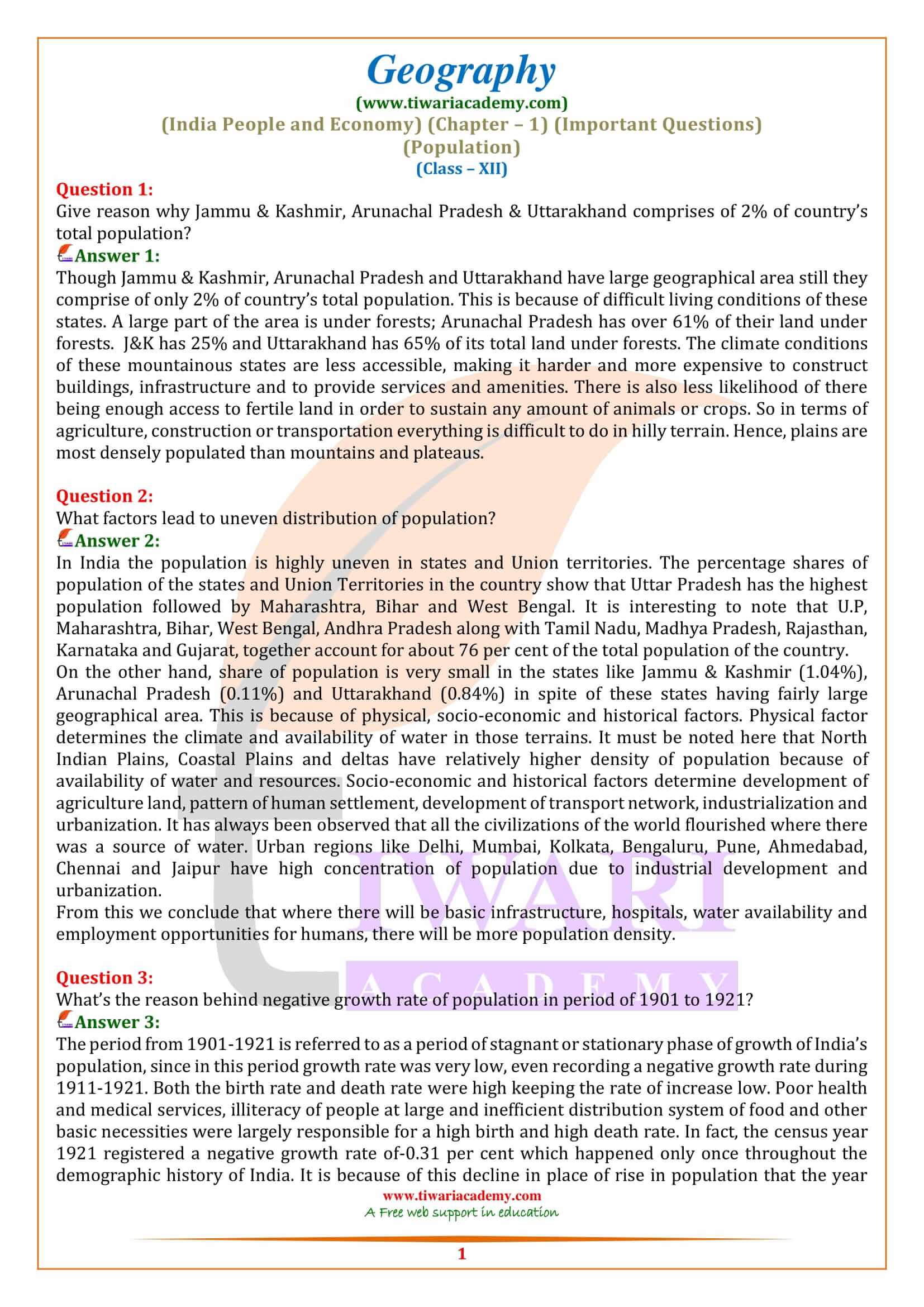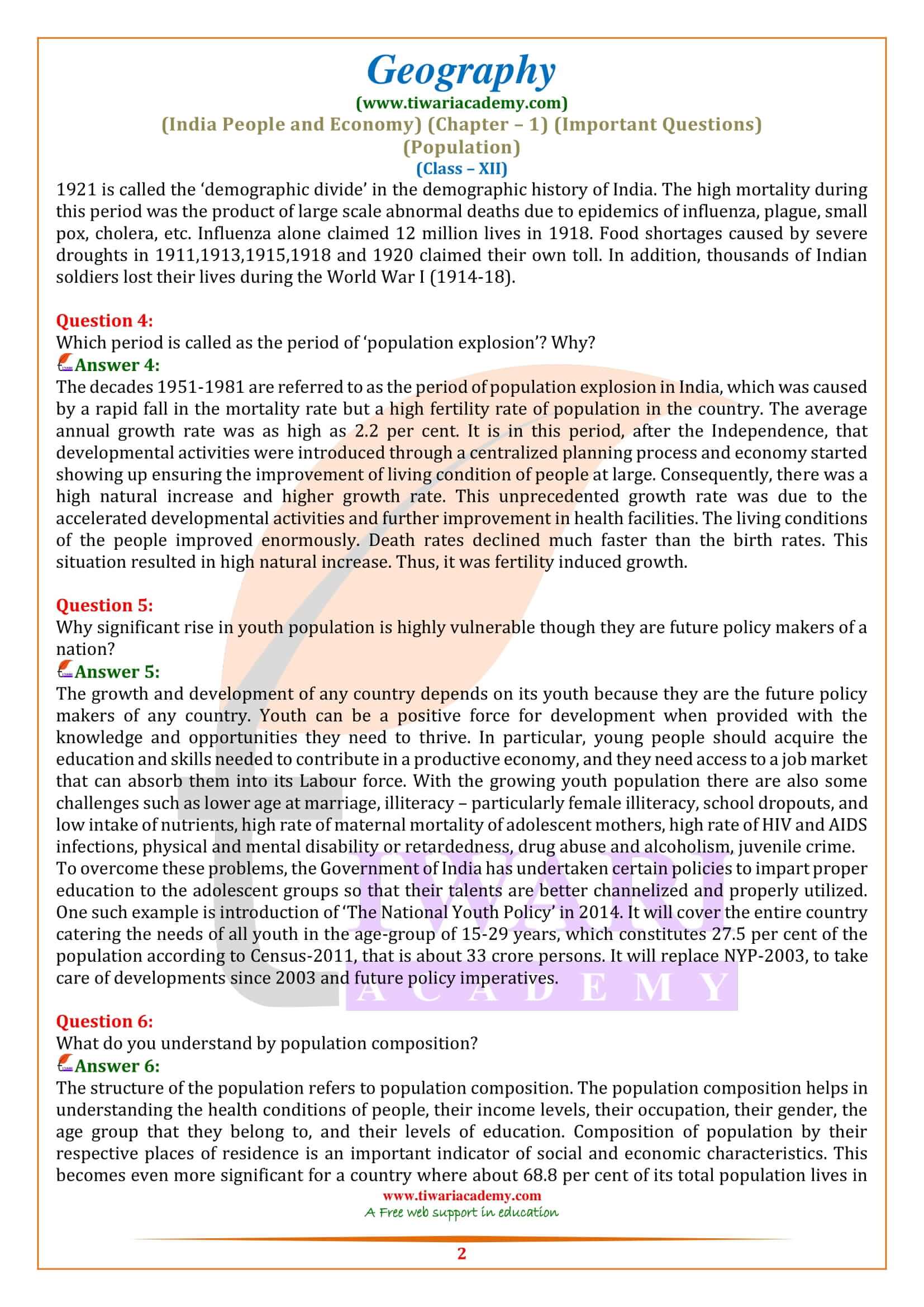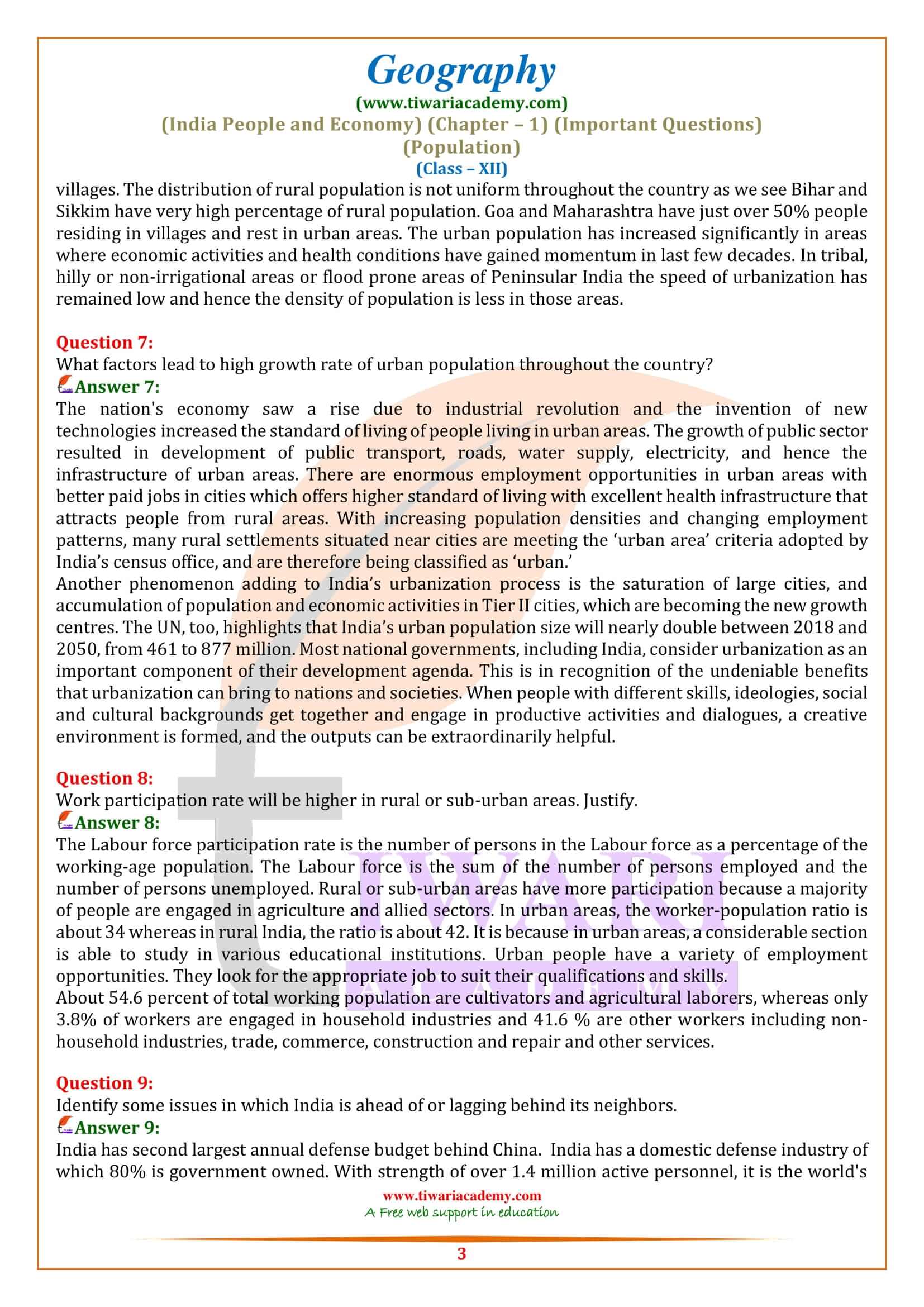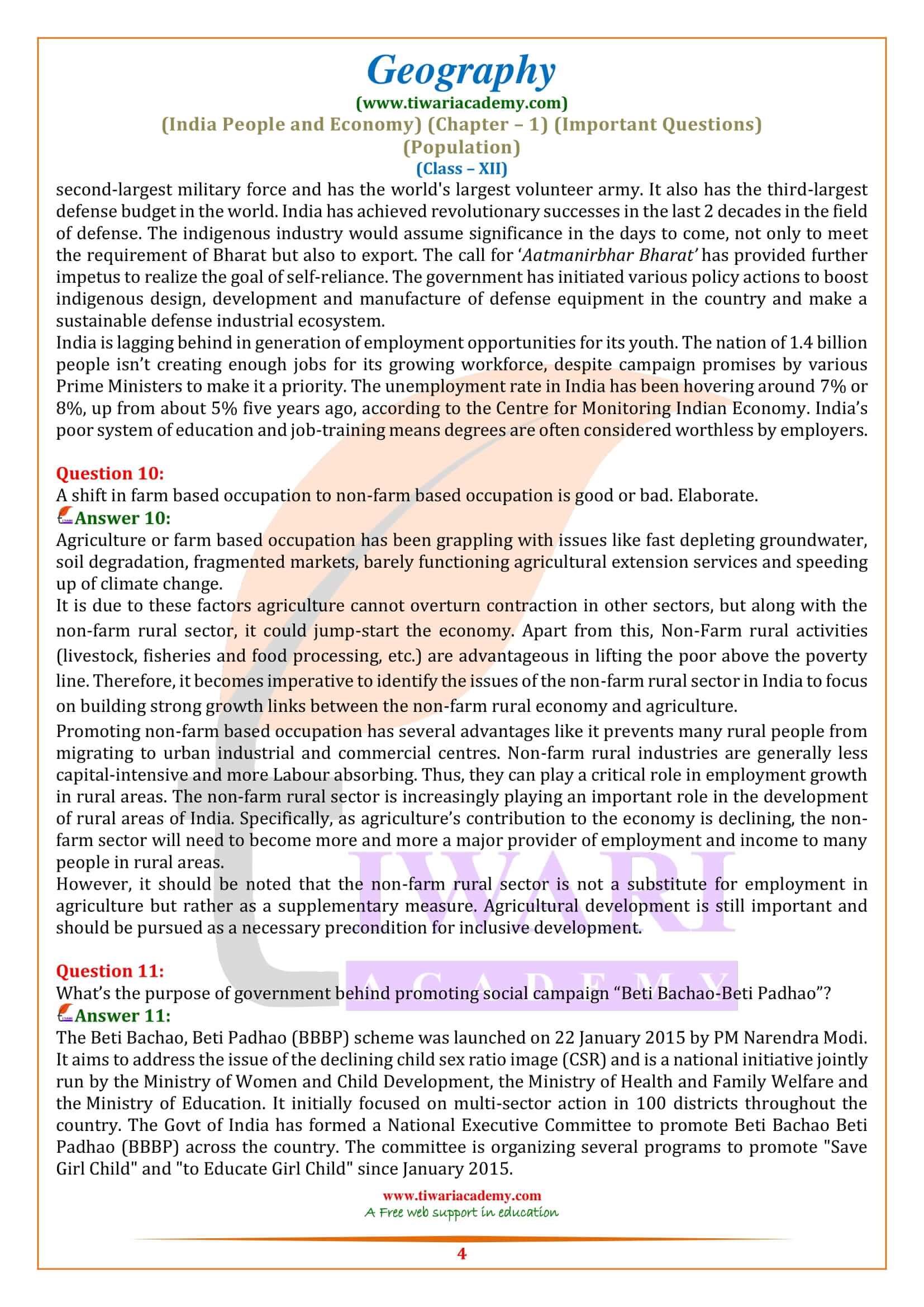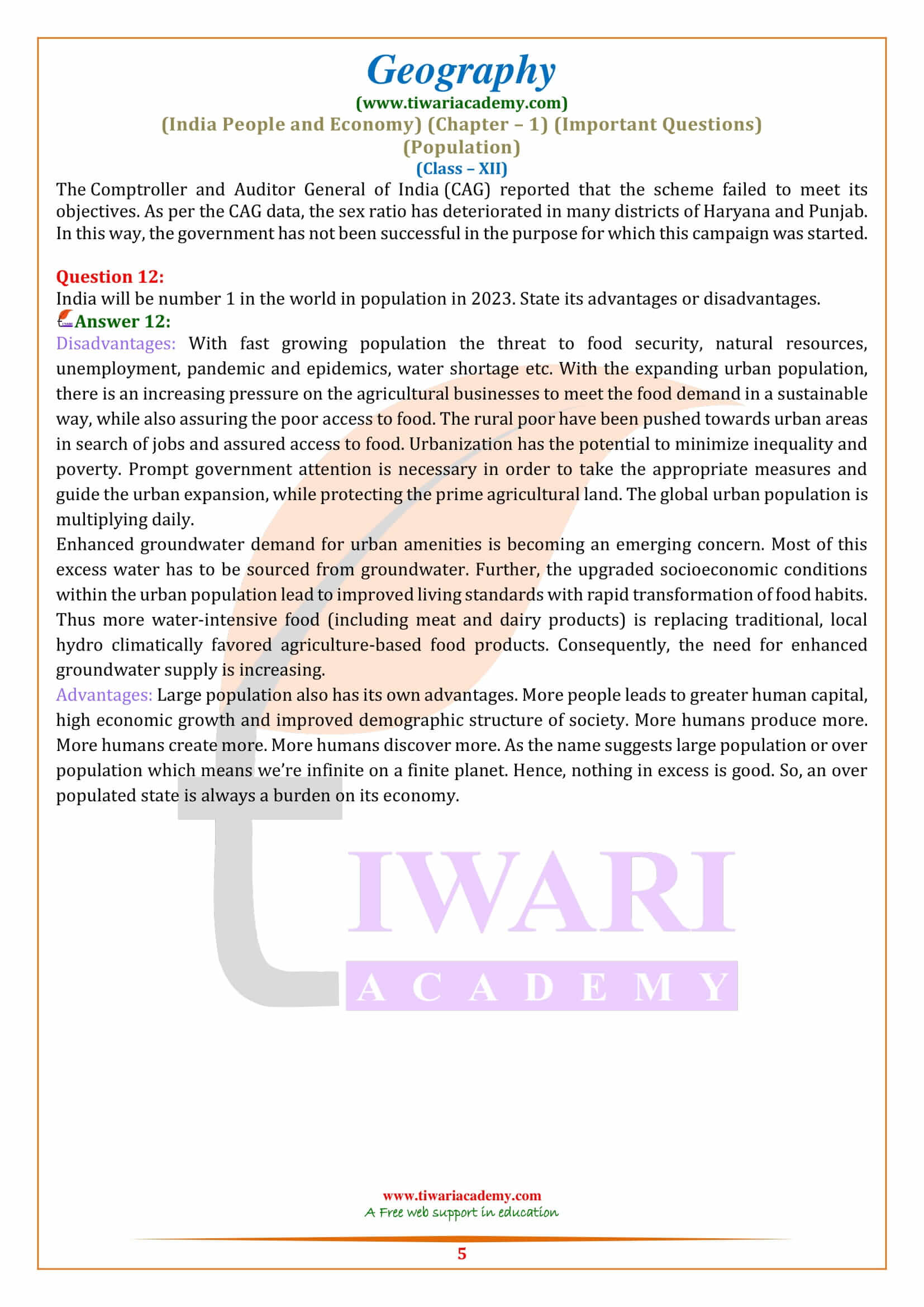Class 12 Geography Chapter 1 Important Questions of Population: Distribution, Density, Growth and Composition prepared for new CBSE session 2025-26. Get all the extra question answers of chapter 1 in 12th Geography Part 2 textbook India People and Economy.
Class 12 Geography Chapter 1 Important Questions
Class 12 Geography Chapter 1 Important Extra Question Answers
Give reason why Jammu & Kashmir, Arunachal Pradesh & Uttarakhand comprises of 2% of country’s total population?
Though Jammu & Kashmir, Arunachal Pradesh and Uttarakhand have large geographical area still they comprise of only 2% of country’s total population. This is because of difficult living conditions of these states. A large part of the area is under forests; Arunachal Pradesh has over 61% of their land under forests. J&K has 25% and Uttarakhand has 65% of its total land under forests.
The climate conditions of these mountainous states are less accessible, making it harder and more expensive to construct buildings, infrastructure and to provide services and amenities. There is also less likelihood of there being enough access to fertile land in order to sustain any amount of animals or crops. So in terms of agriculture, construction or transportation everything is difficult to do in hilly terrain. Hence, plains are most densely populated than mountains and plateaus.
What factors lead to uneven distribution of population?
In India the population is highly uneven in states and Union territories. The percentage shares of population of the states and Union Territories in the country show that Uttar Pradesh has the highest population followed by Maharashtra, Bihar and West Bengal. It is interesting to note that U.P, Maharashtra, Bihar, West Bengal, Andhra Pradesh along with Tamil Nadu, Madhya Pradesh, Rajasthan, Karnataka and Gujarat, together account for about 76 per cent of the total population of the country.
On the other hand, share of population is very small in the states like Jammu & Kashmir (1.04%), Arunachal Pradesh (0.11%) and Uttarakhand (0.84%) in spite of these states having fairly large geographical area. This is because of physical, socio-economic and historical factors. Physical factor determines the climate and availability of water in those terrains. It must be noted here that North Indian Plains, Coastal Plains and deltas have relatively higher density of population because of availability of water and resources. Socio-economic and historical factors determine development of agriculture land, pattern of human settlement, development of transport network, industrialization and urbanization.
It has always been observed that all the civilizations of the world flourished where there was a source of water. Urban regions like Delhi, Mumbai, Kolkata, Bengaluru, Pune, Ahmedabad, Chennai and Jaipur have high concentration of population due to industrial development and urbanization.
From this we conclude that where there will be basic infrastructure, hospitals, water availability and employment opportunities for humans, there will be more population density.
What’s the reason behind negative growth rate of population in period of 1901 to 1921?
The period from 1901-1921 is referred to as a period of stagnant or stationary phase of growth of India’s population, since in this period growth rate was very low, even recording a negative growth rate during 1911-1921. Both the birth rate and death rate were high keeping the rate of increase low. Poor health and medical services, illiteracy of people at large and inefficient distribution system of food and other basic necessities were largely responsible for a high birth and high death rate.
In fact, the census year 1921 registered a negative growth rate of-0.31 per cent which happened only once throughout the demographic history of India. It is because of this decline in place of rise in population that the year 1921 is called the ‘demographic divide’ in the demographic history of India. The high mortality during this period was the product of large scale abnormal deaths due to epidemics of influenza, plague, small pox, cholera, etc. Influenza alone claimed 12 million lives in 1918. Food shortages caused by severe droughts in 1911,1913,1915,1918 and 1920 claimed their own toll. In addition, thousands of Indian soldiers lost their lives during the World War I (1914-18).
Which period is called as the period of ‘population explosion’? Why?
The decades 1951-1981 are referred to as the period of population explosion in India, which was caused by a rapid fall in the mortality rate but a high fertility rate of population in the country. The average annual growth rate was as high as 2.2 per cent. It is in this period, after the Independence, that developmental activities were introduced through a centralized planning process and economy started showing up ensuring the improvement of living condition of people at large. Consequently, there was a high natural increase and higher growth rate.
This unprecedented growth rate was due to the accelerated developmental activities and further improvement in health facilities. The living conditions of the people improved enormously. Death rates declined much faster than the birth rates. This situation resulted in high natural increase. Thus, it was fertility induced growth.
